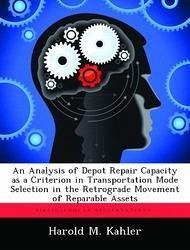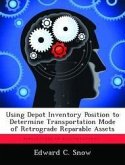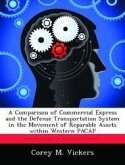To support smaller reparable asset inventories, current Air Force logistics policies direct the "expedited evacuation of reparables and to the source of repair." Mode selection is based on the asset. Focusing on the asset is an efficient and effective method of getting assets to where they are needed in a timely manner in the forward portion of the supply pipeline. However, in the reverse portion of the pipeline, the demand for an asset may no longer be critical to how it is transported. The quantity of the asset at the depot may already exceed repair capacity. In this instance, rapid movement, results in the asset being added to the backlog already awaiting repair. Retrograde modal selection focus should shift to repair capacity. Since the depots face budget and manning constraints and do not operate on a continuous basis, their repair capacity is limited. With finite repair resources, the question of when an asset can be repaired should be involved in mode determination. This thesis will evaluate current Air Force retrograde transportation mode selection policy. Using Warner Robins Air Logistics Center reparable asset production data, this thesis will compare depot pipeline inventory for a random sample of reparable assets against the depot's repair capacity. If depot pipeline quantity is greater than the depot repair rate, then use of premium transportation is inappropriate, unless it is the lowest cost mode. The difference in cost between the mode used and the alternate mode will demonstrate the potential savings of using depot repair capacity as a determinant of mode selection.








